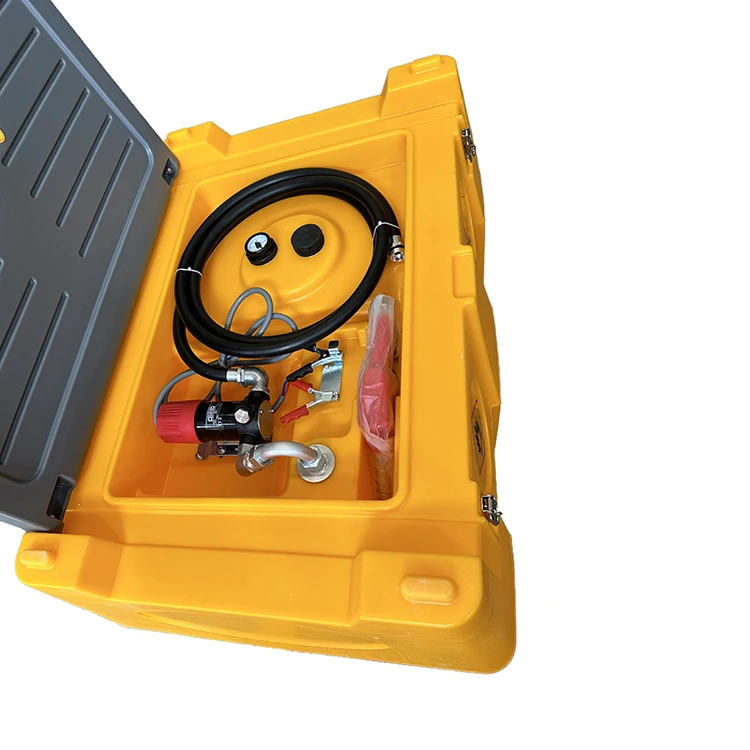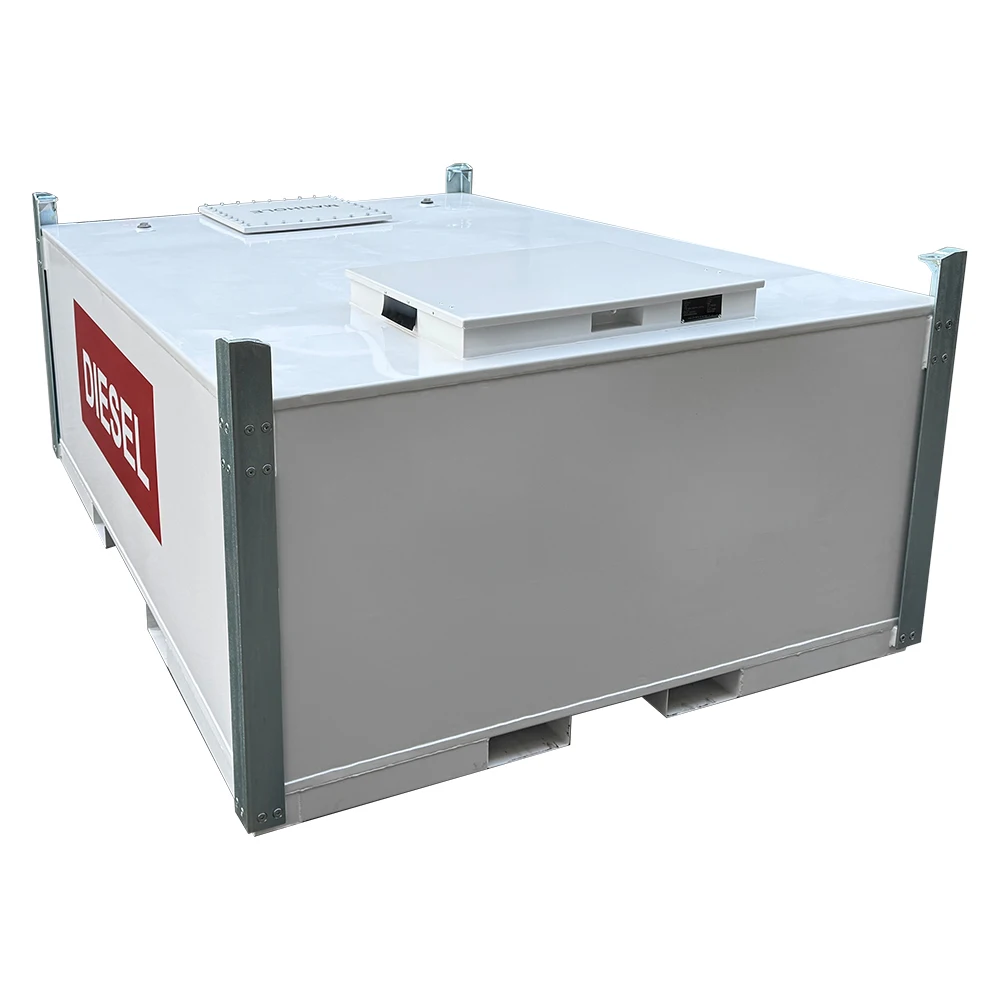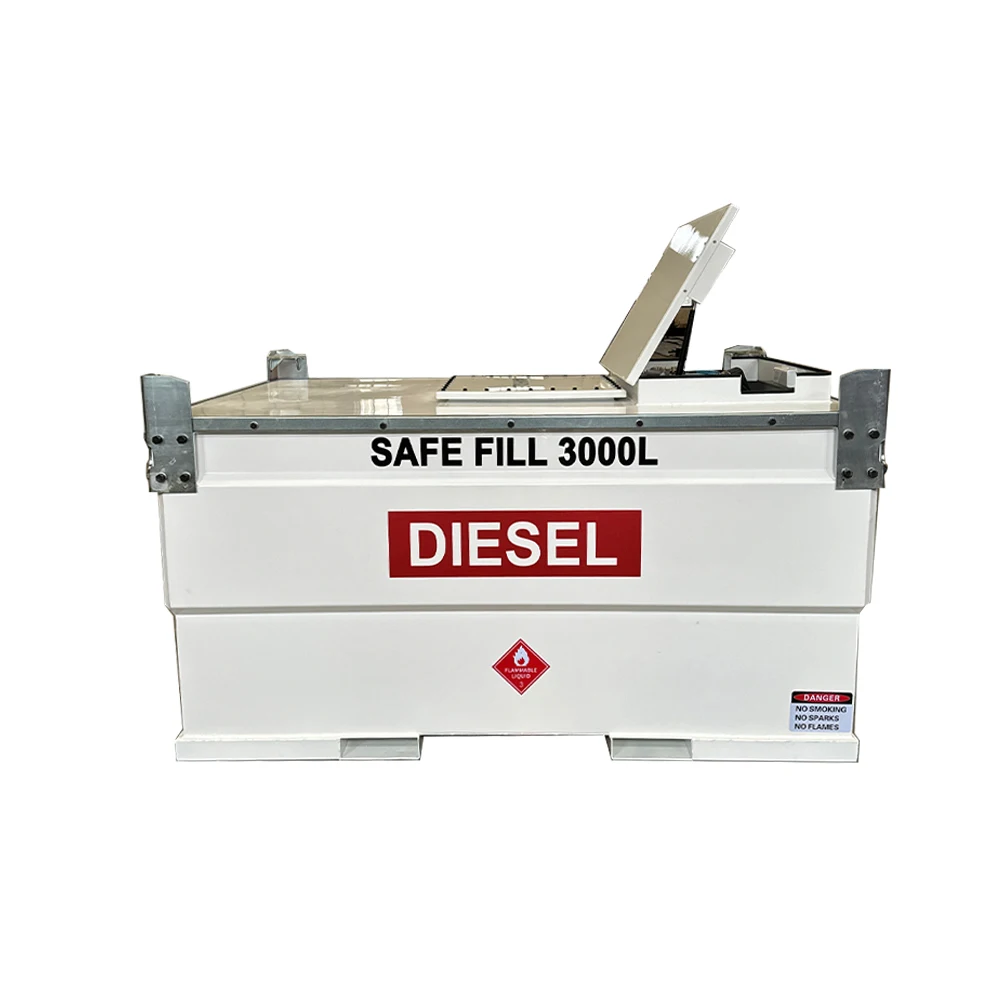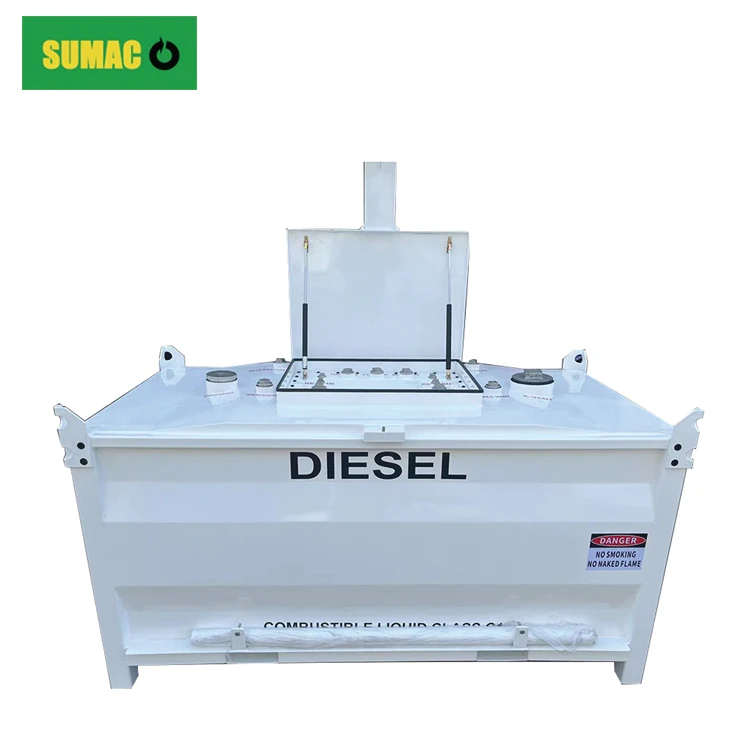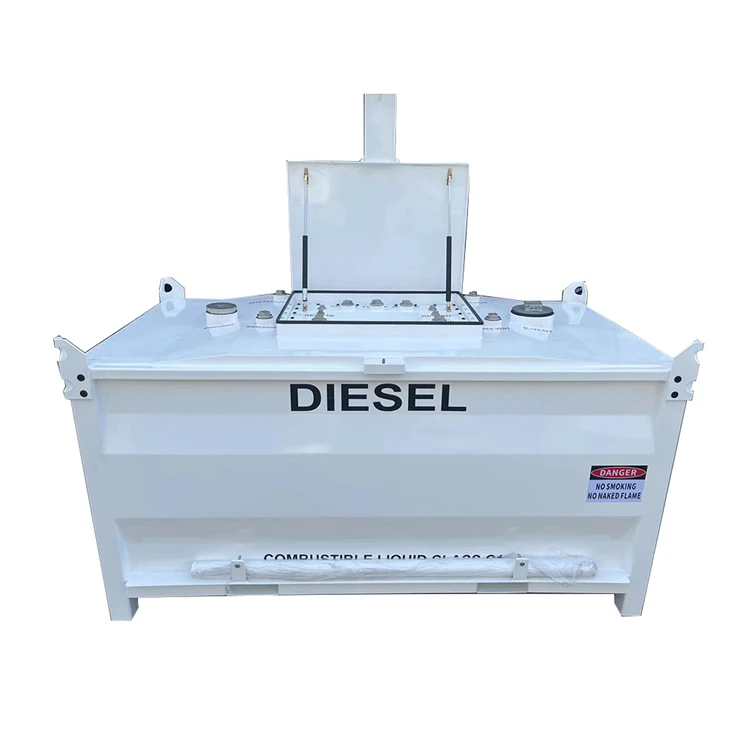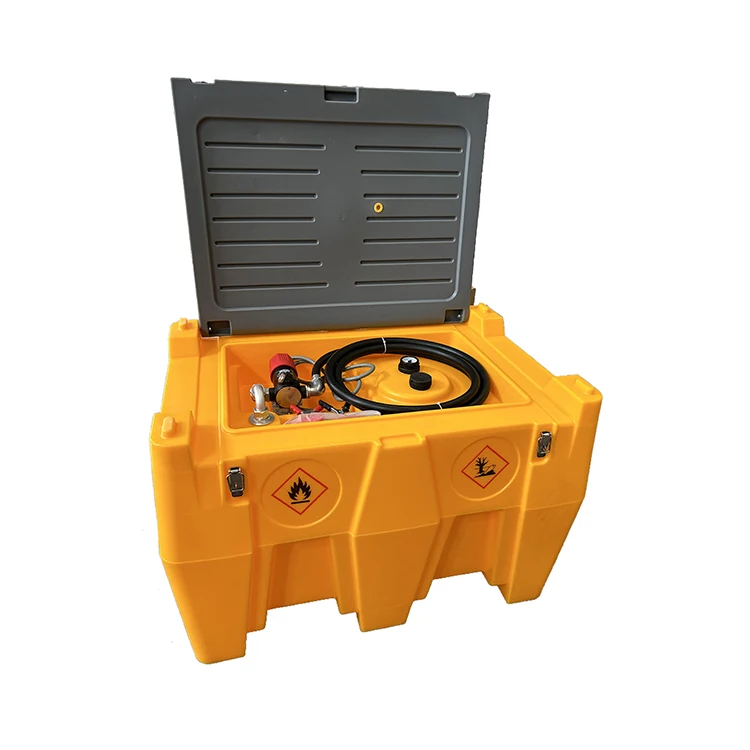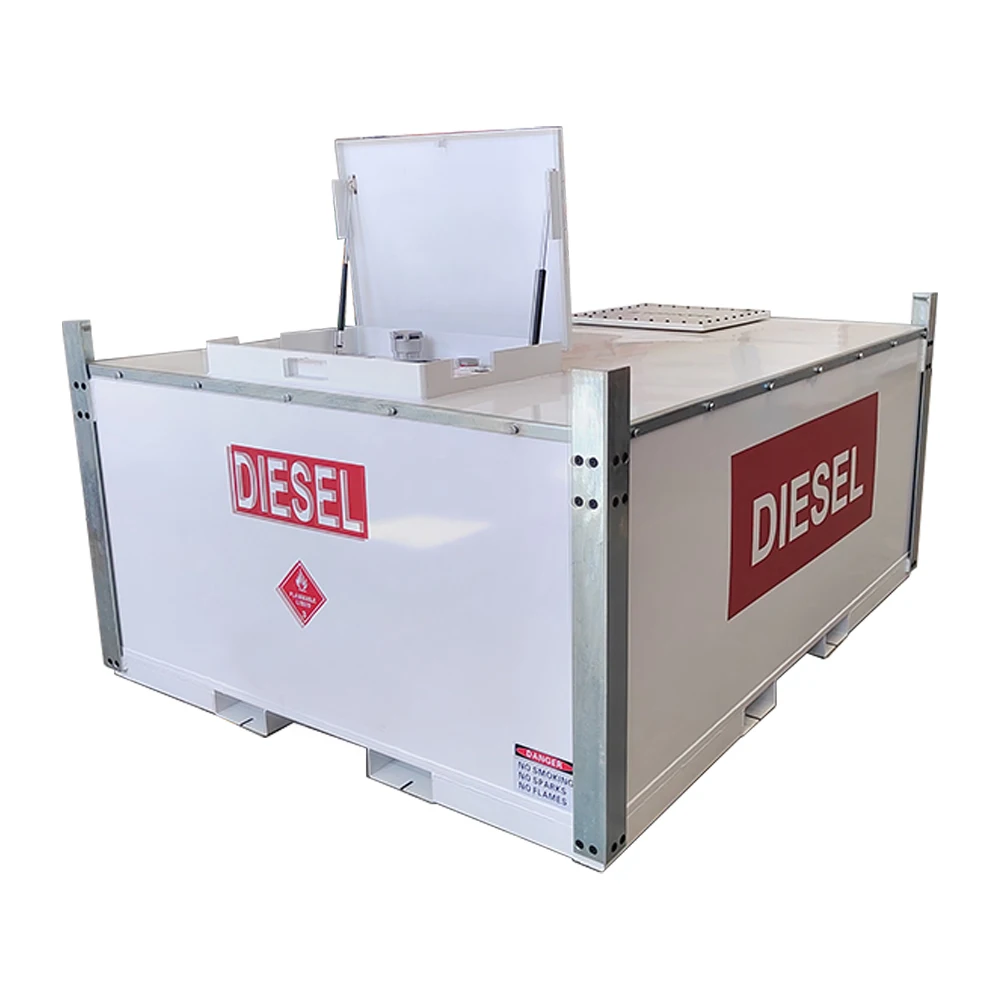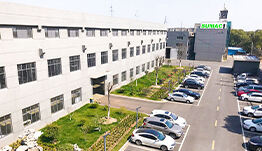Self bunded fuelcube tank sale for NZ
When choosing a customized fuel tank, you need to consider several factors to ensure that it meets your specific usage requirements. Here are some key selection factors:
1. Capacity requirements
According to the equipment's operating time and fuel consumption rate, accurately calculate the required fuel storage capacity. For example, for long-distance trucks, a larger capacity fuel tank is required to reduce the number of refueling and improve transportation efficiency; while for some small agricultural machinery, a smaller capacity fuel tank may be sufficient to meet its one-time operation needs.
2. Installation space
The size and shape of the space where the equipment can accommodate the fuel tank determines the size and shape of the customized fuel tank. It is necessary to accurately measure the spatial dimensions of the installation location, including length, width, height, and available irregular space, so as to design a fuel tank that perfectly fits it, making full use of the space without affecting other parts of the equipment.
3. Fuel type
Different fuels have different physical and chemical properties, such as gasoline, diesel, aviation kerosene, etc. The material and sealing design of the fuel tank need to be compatible with the fuel used to prevent the fuel from corroding, swelling, and other damage to the tank, ensuring the quality and safety of the fuel.
4. Working environment
Consider the environmental conditions where the equipment is used, such as temperature, humidity, altitude, etc. In high temperature environments, fuel tanks need to have good high temperature resistance and heat dissipation design to prevent excessive volatilization of fuel and excessive pressure in the tank; in humid or corrosive environments, fuel tanks should be made of corrosion-resistant materials or undergo special anti-corrosion treatment.
5. Performance requirements
Determine the performance requirements of the fuel tank, such as fuel delivery pressure, flow rate, filtration accuracy, etc., according to the working characteristics of the equipment. For example, some high-performance engines may require the fuel tank to provide a stable high-pressure fuel supply to ensure the normal operation of the engine; and for some equipment with high requirements for fuel cleanliness, the fuel tank needs to be equipped with a high-precision filter.
6. Safety standards
Ensure that the customized fuel tank meets relevant safety standards and regulatory requirements, such as fire prevention, explosion prevention, and leakage prevention. The fuel tank should have good sealing and safety ventilation devices to prevent fuel leakage from causing fire or explosion accidents; at the same time, it is also necessary to consider the protection measures and safety performance of the fuel tank in the event of a collision or other unexpected situations.
https://www.sumachine.com/
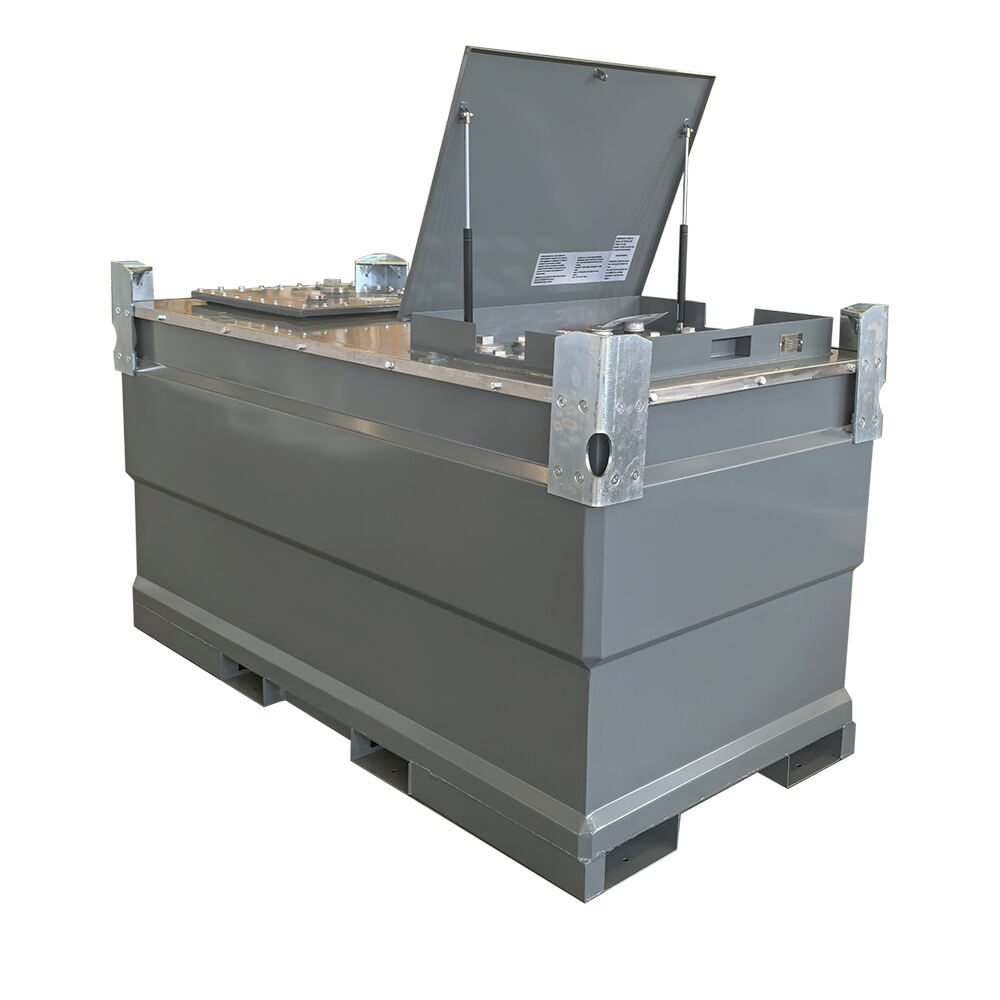
Recommended Products
Hot News
-
Double wall portable diesel gasoline cube tank with pump sale for Mauritius
2024-11-11
-
Double Walled Portable Fuel TransferCube Tank Ship To Spain
2024-11-07
-
Shipping of portable aviation fuel tank with pump
2024-10-12
-
Carbon steel diesel fuel cube tank ship to USA
2024-11-14
-
Carbon steel cube tank with pump
2024-11-13
-
Fuel Transfer Tank Cube Stationary Double Walled Diesel Storage Tank Sale For Spain
2024-11-06
-
251 US Gallon 552 Gallon Fuel Cube Transfer Tank Sale For USA
2024-11-05
-
251-2000 Gallon Fuel Cube Transfer Tank Sale For Grenada
2024-11-01
-
552 Gallon portable fuel dispenser with tank sale for USA
2024-10-30
-
Mobile fuel tank with pump sale for Spain
2024-10-22
 EN
EN
 AR
AR
 BG
BG
 HR
HR
 CS
CS
 DA
DA
 NL
NL
 FI
FI
 FR
FR
 DE
DE
 EL
EL
 IT
IT
 JA
JA
 KO
KO
 NO
NO
 PL
PL
 PT
PT
 RO
RO
 RU
RU
 ES
ES
 SV
SV
 TL
TL
 ID
ID
 LT
LT
 SR
SR
 SK
SK
 SL
SL
 UK
UK
 VI
VI
 HU
HU
 TH
TH
 TR
TR
 MS
MS
 GA
GA
 IS
IS
 KA
KA
 HT
HT
 KK
KK
 UZ
UZ


